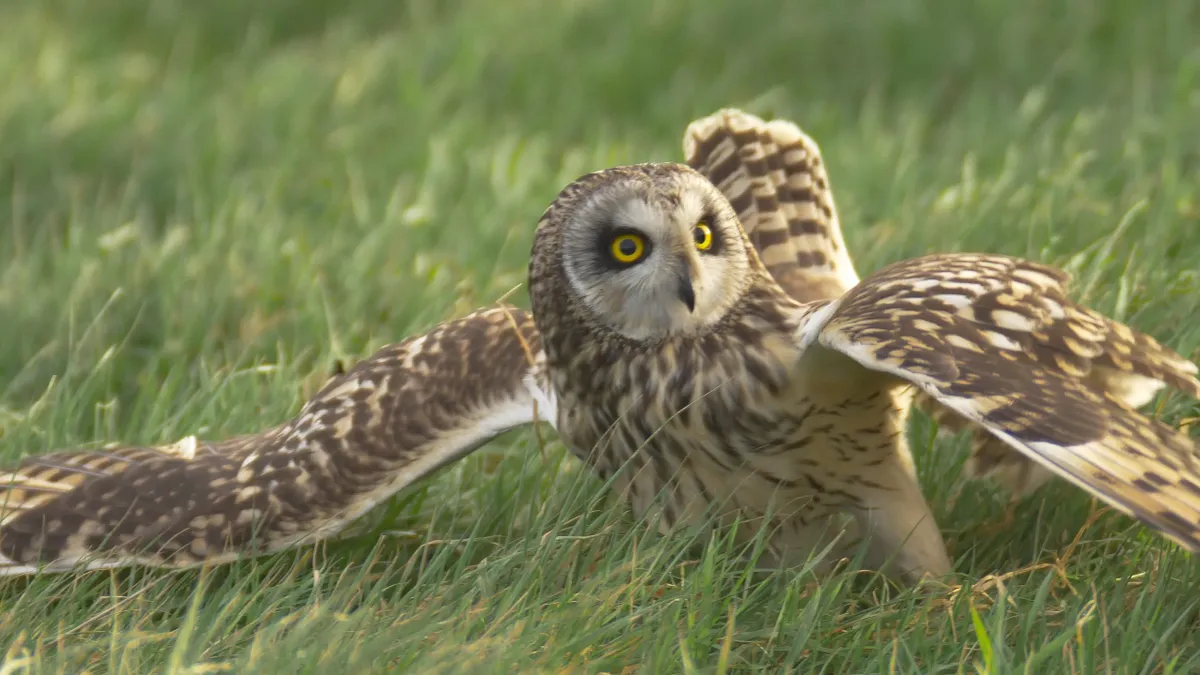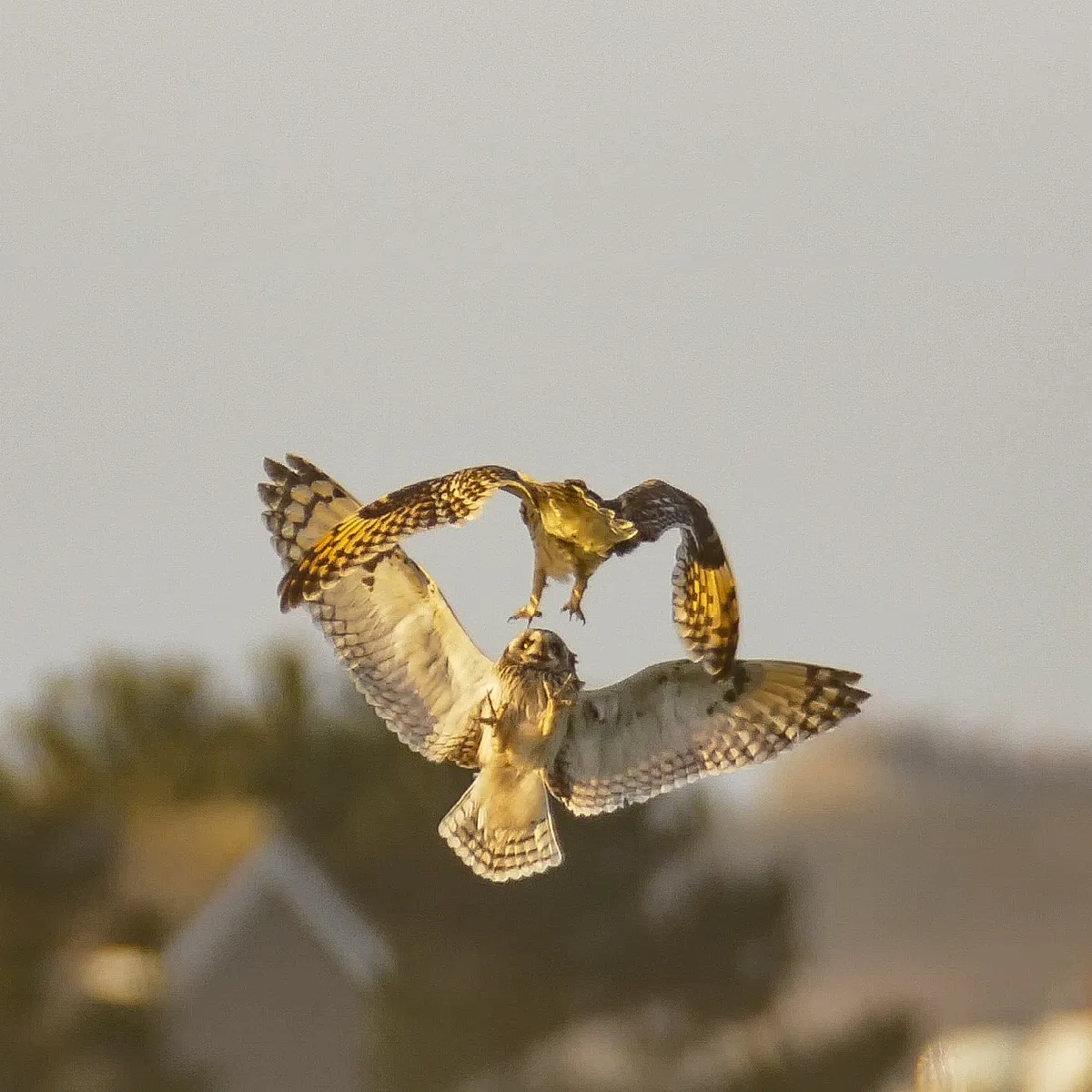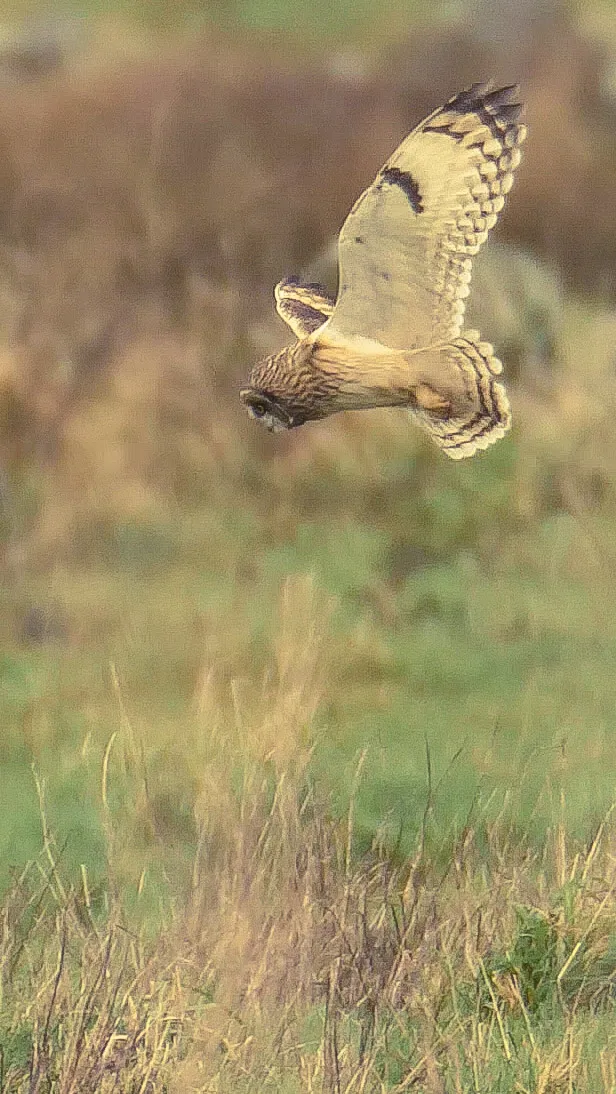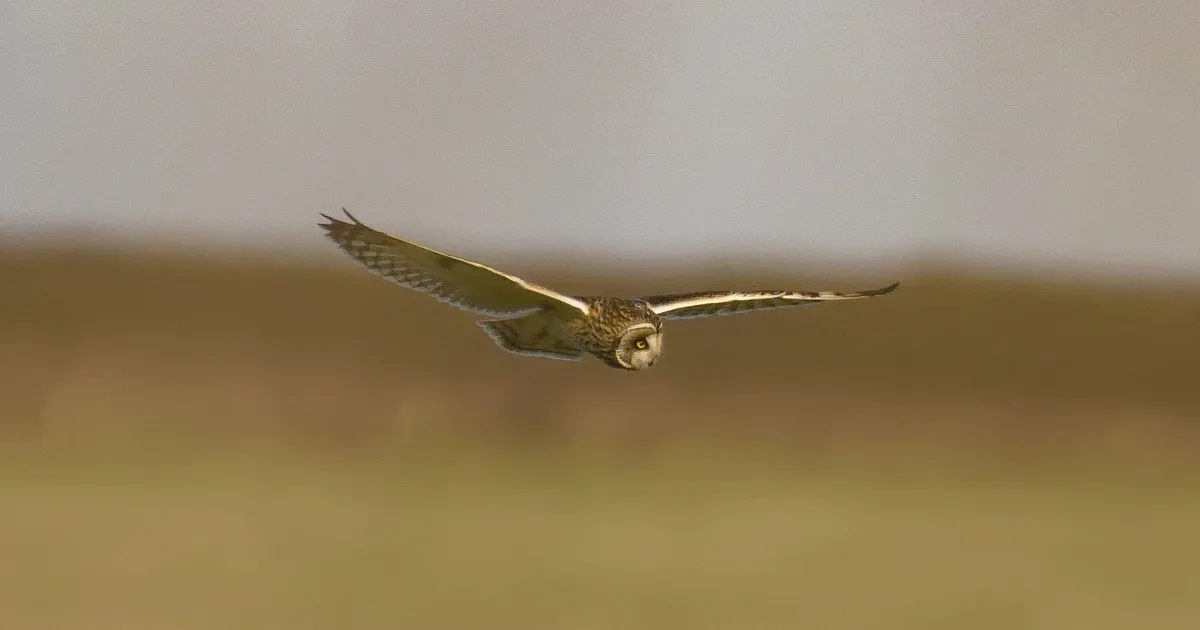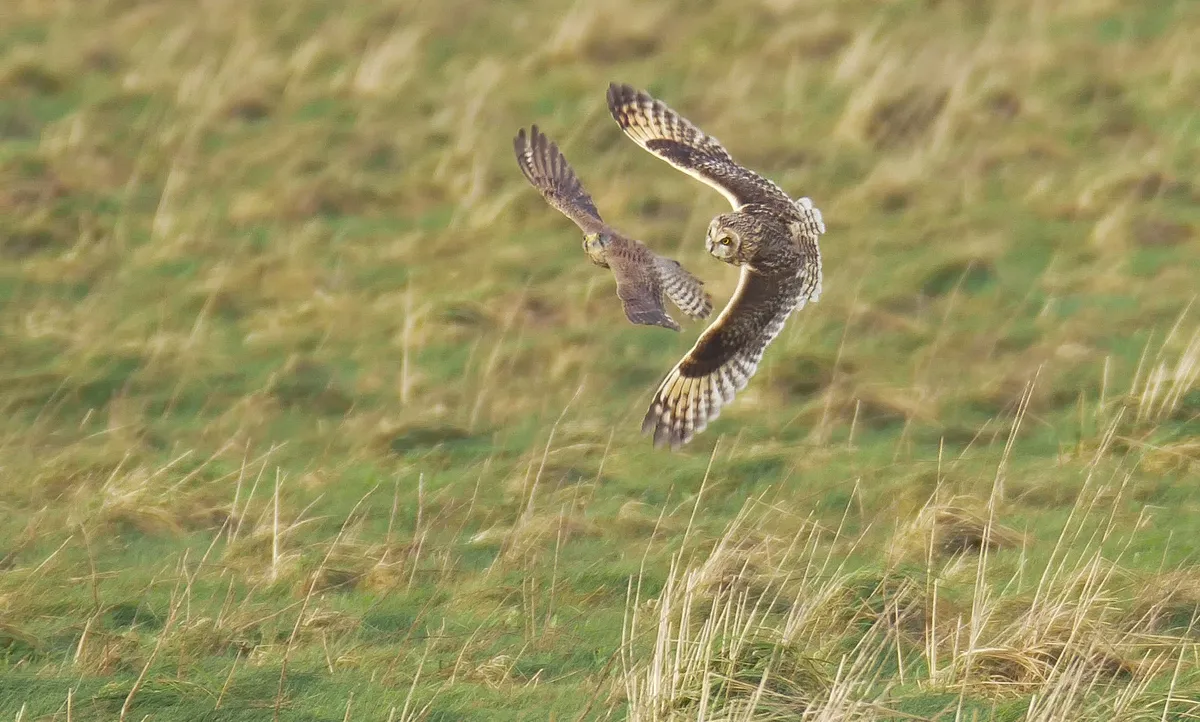Silently swooping throughout the land as night draws in, Britain's owls are elusive, beautiful birds which can be seen in both rural and urban landscapes. Owls are one of Britain's most spectacular wildlife species to spot.
Read on for our guide to the UK's native owl species, including how to identify, diet and habitat and best places to see.
Which owl species are native to the UK?
There are five resident owl species found in the UK and British Isles, four of which are native (barn, tawny, long-eared and short-eared) and one (little) was introduced in the 1800s.
Only three of these species are found in Northern Ireland: barn, long-eared and short-eared owl. The most common owl in Northern Ireland is the long-eared owl. The short-eared owl is a winter visitor.
Which is the most common owl found in the UK?
The tawny owl is the most common British owl species – listed below are the most common owl species found in the UK.
Learn more about British wildlife:
Which other owl species are sometimes seen in the UK?
Occasionally other owl species are seen here. The snowy owl is a rare visitor from further north that has bred here on occasion.
Do any eagle owls live in the UK?
The eagle owls currently breeding in the UK, of which there are just a few pairs, are the result of accidental releases or deliberate introductions from captive stock. Within the archaeological and fossil record there are specimens that have been put forward as eagle owls – bird remains are not easy to identify to the species level – and a review of these suggested that the animal should be considered part of our native avifauna.
However, there is no evidence that any of the birds currently at liberty have arrived here naturally, and the eagle owl remains on Category E of the British list, denoting its non-native status.
Young eagle owls can disperse over very long distances, but the evidence suggests that they are unwilling to cross large bodies of water, such as the English Channel and the North Sea. A review of aviary losses indicates that as many as 60–70 captive eagle owls may escape into the wild each year, nearly two- thirds of which are never recaptured.
This Q&A originally appeared in BBC Wildlife Magazine, and was answered by Mike Toms.
Are all owls nocturnal?
The five owl species are all adapted for nocturnal and diurnal hunting, however they can sometimes be seen during the day as well, particularly if the weather has been poor during recent nights and they need to hunt.
The UK's owl species share a number of adaptations that aid them in their nocturnal way of life. They all have large, forward-facing eyes, which are so vast that the owl skull is highly modified to accommodate them and give owls their characteristic flat-faced, round-headed appearance.
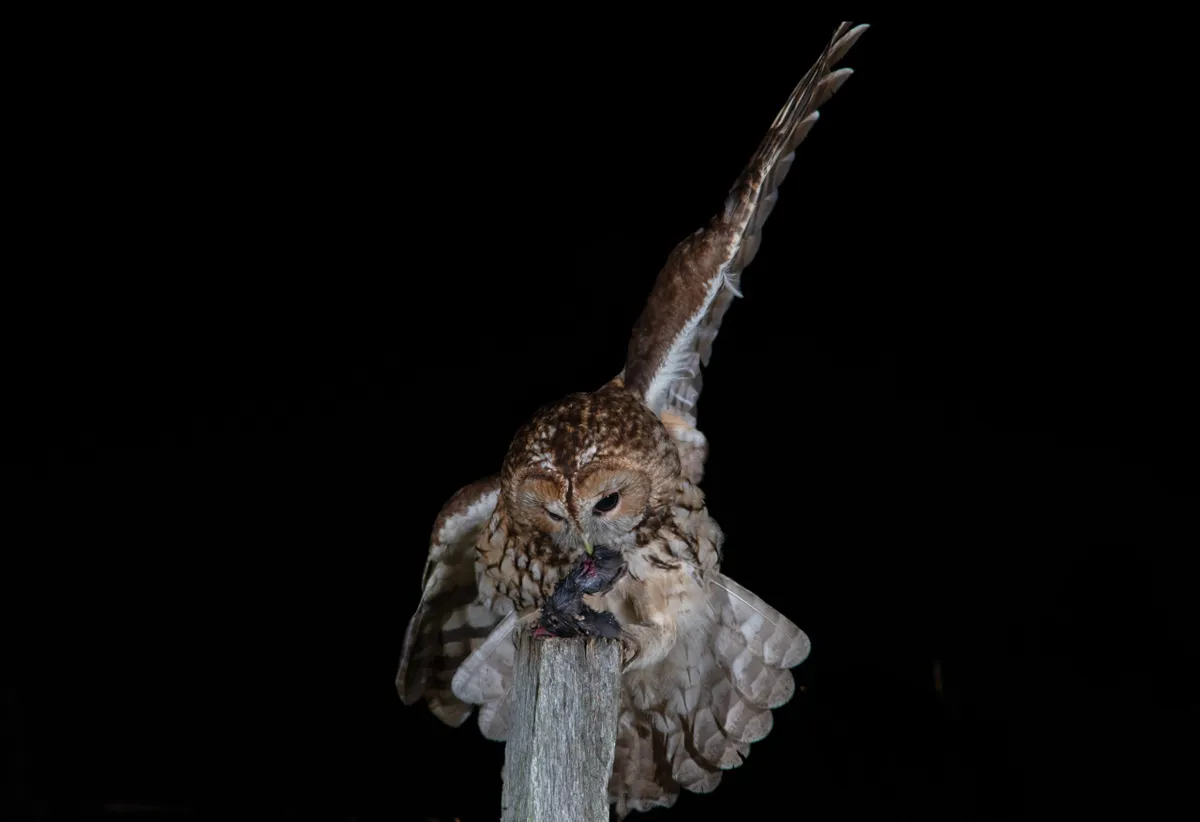
The owl's sizeable eyes also provide greater visual sensitivity, enabling it to make the most of what little light is available at night. Interestingly, while the visual sensitivity of owls is advanced compared to most diurnal birds, it is not that much better than humans.
How do owls twist their heads round?
Owls can rotate their heads up to 270 degrees and twist them nearly upside-down, but how?
All birds have very mobile heads, partly to aid preening, feeding and flight, and partly to compensate for the fact that their eyes are fixed in their sockets (making it difficult for birds to glance around them).
They have 11–25 neck vertebrae compared with just 7 in most mammals.
Owls take this flexibility to extremes: they can rotate their heads up to 270 degrees and twist them nearly upside-down.
To prevent such contortions bursting blood vessels or cutting off the blood supply to the brain, the arteries in an owl’s neck – which sit inside tubes within the hollow bones – are cushioned by air sacs.
Other arteries at the base of the skull can dilate to store blood, so if the flow is interrupted lower down, there is a reserve to supply the brain.
This question originally appeared as a Q&A in BBC Wildlife Magazine, and was answered by Ben Hoare.
Owl species found in the UK
1
Barn owl (Tyto alba)
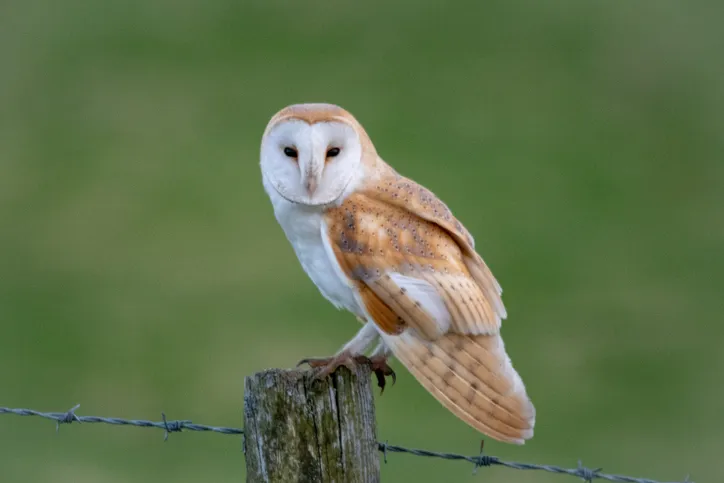
Numbers have declined in recent years, but barn owls, are one of Britain's most recognisable owl species.
Where to see barn owls
Most commonly found in farmland and grassland, once a barn owl has found a suitable hunting spot, they will return to this location every year. Barn owls tend to hunt at dawn and dusk and have a general life span of 10 years in the wild.
To encourage them closer to your home, install a super-safe owl box to your garden or leave a patch of grass to grow, creating a habitat for voles.
Please note that external videos may contain ads:
What do barn owls eat?
With a diet of small rodents such as wood mice, field voles and common shrews, they silently swoop down in tussocky terrain, (also known as grassland) to catch their prey. Barn owls are one of the only birds to have the ability to fly silently and this enables them to hear the tiny, quiet movements of their prey.
What is the wingspan of a barn owl?
Barn owls have wings with a large surface area that can reach lengths of 80-95cm. This allows barn owls to glide for much longer than other birds, meaning they don't have to flap as much, decreasing noise levels. Subsequently, barn owls are medium-sized predators, reaching about 36cm in body length.
2
Tawny owl (Strix aluco)

Tawny owls have a wingspan of approximately one meter and weigh around 500g. Just like barn owls, tawny owls will live in the same location for the majority of their life, and sometimes even lay their eggs in abandoned crow's nests or squirrel dreys. When searching for tawny owls, look out for owl pellets. These are indigestible materials wrapped in fur and coughed back up by the owl, to prevent damage to the bird's inner organs.
Where to see tawny owls
Tawny owls can be found in mainland Britain and the Isle of Man. The most widespread owl species found in the UK, tawny owls prefer wooded habitats, including some wooded suburbs. This sedentary and territorial species uses the knowledge of its woodland territory to hunt small mammals from favoured perches.
What do tawny owls eat?
They have sustained a wide population throughout the land due to their versatile diet of small mammals, amphibians, bats and even earth worms.
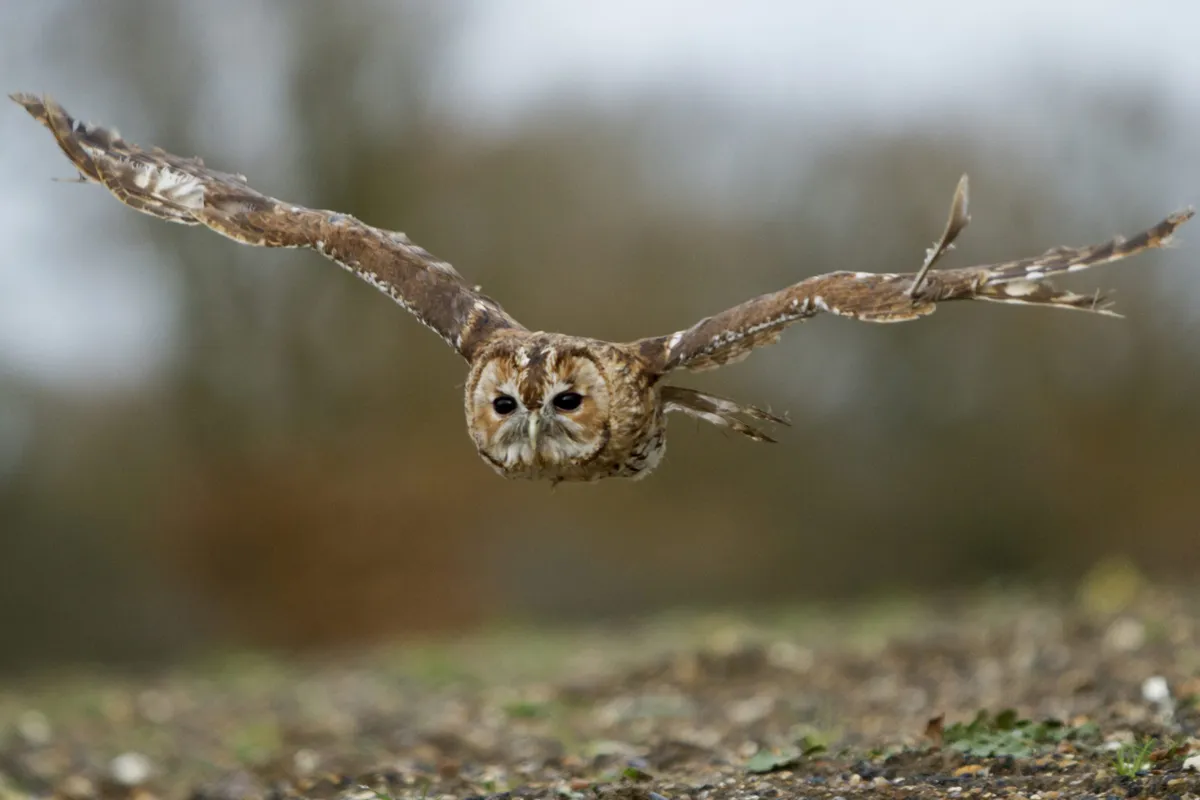
How do tawny owls communicate?
Tawny owls have a circular face, which allows sound waves to be re-directed to their ears, located underneath their feathers. Tawny owl ears, like many other species of owl, are slightly out of alignment, which allows its exceptional directional hearing.
Male tawnies hoot to advertise that they have occupied a territory. However, the structure of the hoot differs between individuals, and male tawnies have been found to react more strongly to the calls of strangers than those of known neighbours. This shows that the owls can identify other individuals from their call.
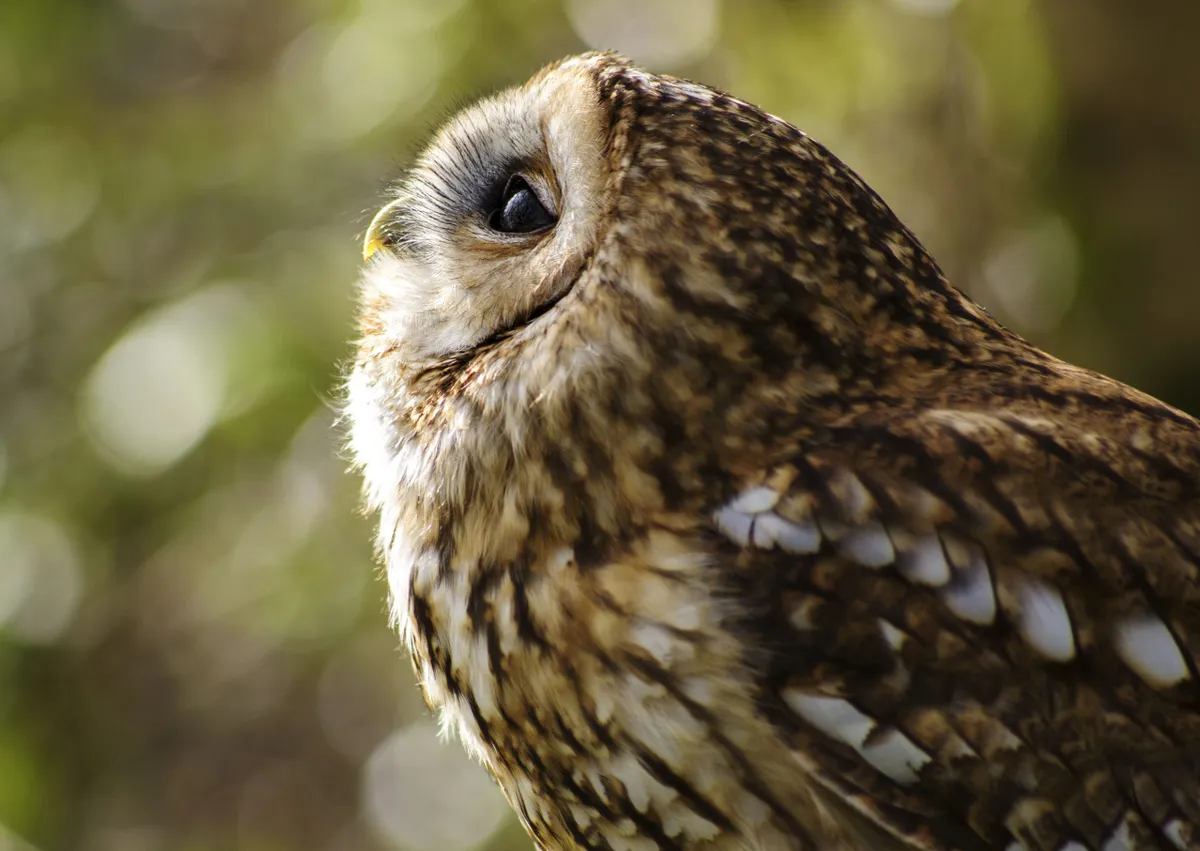
But calls don’t just reveal identity or the holding of a territory. Indeed, evidence suggests that the owl’s vocalisations can impart all sorts of additional information to rivals or prospective mates about the quality of the bird itself.
For example, the pitch of the call is related to the owl’s size, and the final vibrato is longer in larger males than in smaller ones. Males carrying a larger number of blood parasites have calls with a reduced number of frequencies, and a study has revealed that the calls of successful males contain longer notes than those of their less-successful peers.
Please note that external videos may contain ads:
3
Short-eared owl (Asio flammeus)
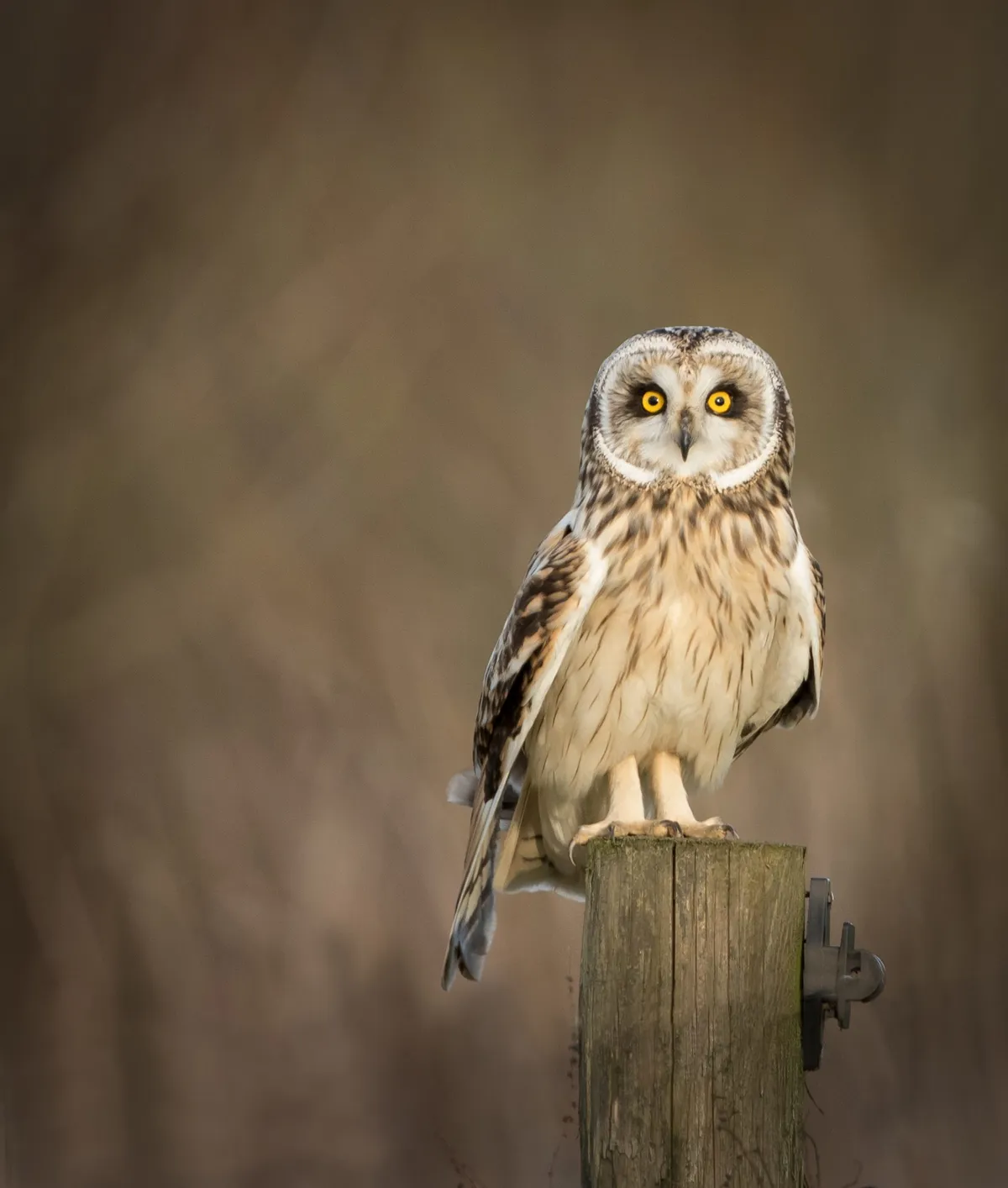
Where to see short-eared owls
The majority of Britain's short-eared owls breed in Northern England and Scotland and can most likely be seen in winter, where they inhabit wetlands and coastal habitats.
Often active during the day, the short-eared owl is restricted as a breeding species to upland moorland and, occasionally, coastal grazing marsh.
What do short-eared owls eat?
These owls are known to hunt during the day, so spotting a short-eared owl whilst it preys on it's lunch is not unusual. These owls have a body length or around 30-40 cm and a wingspan of 90-105cm.
With mottled brown bodies they are able to camouflage into the coastal brush and wetland reeds, on small mammals such as mice, rates and voles. It's noticeable short ear tufts give this owl its name along with its distinctive reddish yellow coloured eyes.
When do they migrate?
A nomadic species its movement, the bird moves between Britain and overseas in response to vole numbers. Throughout the winter some shot-eared owls migrate to Scandinavia, Iceland and Russia, so look out for the occasional spectacle of these owls flying in off the ocean.
4
Long-eared owl (Asio otus)
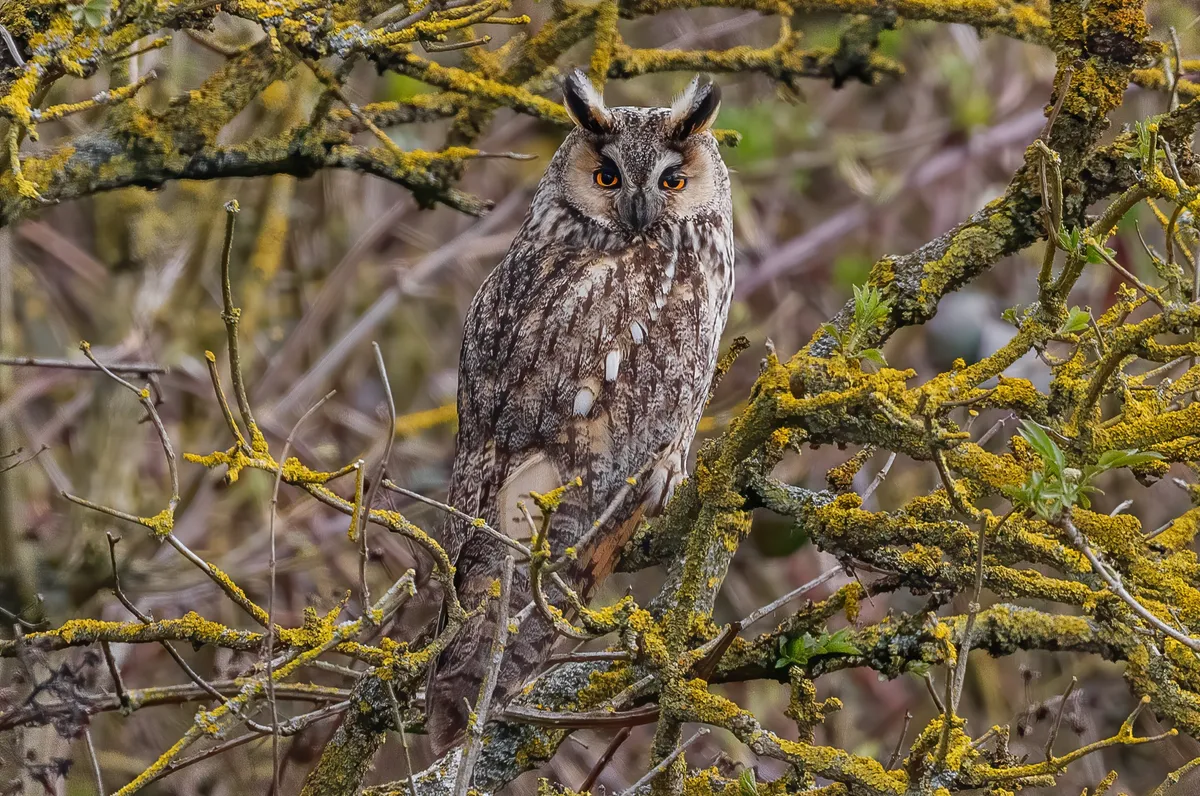
Where to see long-eared owls
Long-eared owls are possibly Britain's most mysterious owl, which is most commonly spotted when migrating around the coast or while in it's communal winter roosts of more than 20 birds.
How do long-eared owls hunt?
This nocturnal and shy species of owl has tufts on it's head, which are made up of around 6-8 feathers. These tufts don't actually have anything to do with the owl's ears, which are located under its feathers on it's facial disk. It is suggested however, that these tufts help to break up the owls silhouette, confusing predators.
Just like tawny owls, long-eared owls lay their eggs in discarded nests as well as hollows in tree trunks. In order to hunt down it's prey, these owls fly in a zig-zag pattern, scanning the ground in the most effective manner.
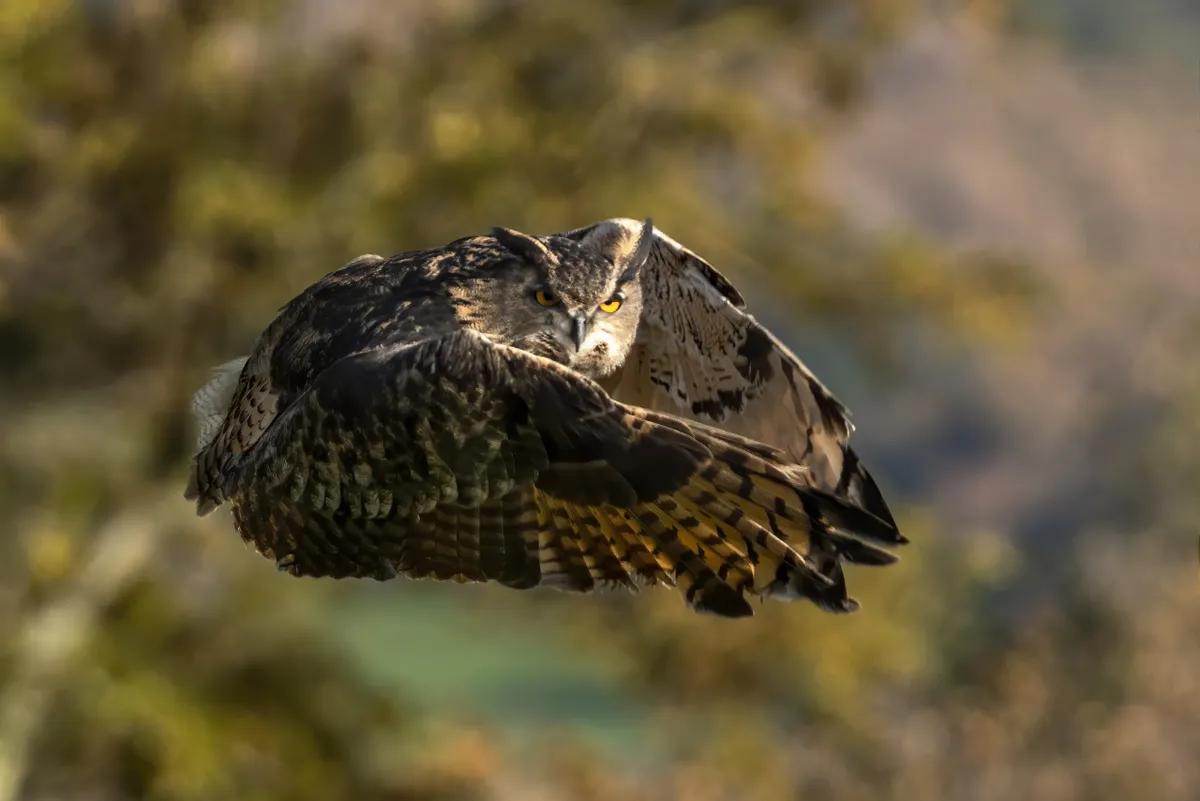
What are owl ear-tufts for?
Roughly a third of owl species worldwide have ear tufts or ‘horns’. These appendages are mainly used for display and visual communication, but are also thought to play a role in camouflage, breaking up the bird’s outline against its background.
Each tuft is comprised of one or more feathers (those of the long-eared owl have 6–8). These are usually flattened against the head and thus difficult to see, but are swiftly raised when an individual is agitated by a potential intruder and needs to carry out its threat display.
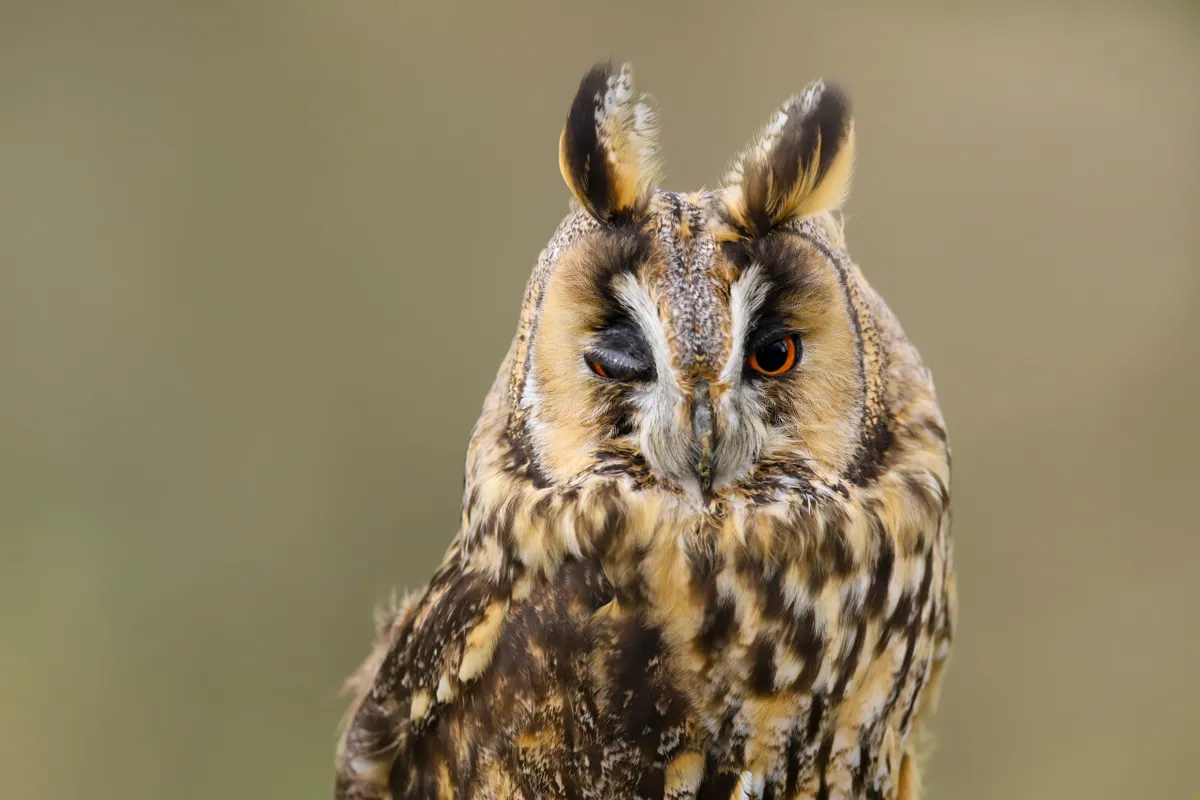
Owls will sometimes raise their ear tufts at human observers, and long-eared owls are also known to raise theirs during the display-flight used to advertise ownership of a breeding territory.
Ear tufts play no role in hearing – an owl’s ears are located lower down on its head, on the margin of the facial disk. In fact, there are no obvious external signs of their presence.
This Q&A originally appeared in BBC Wildlife Magazine, and was answered by Mike Toms.
5
Little owl (Athene noctua
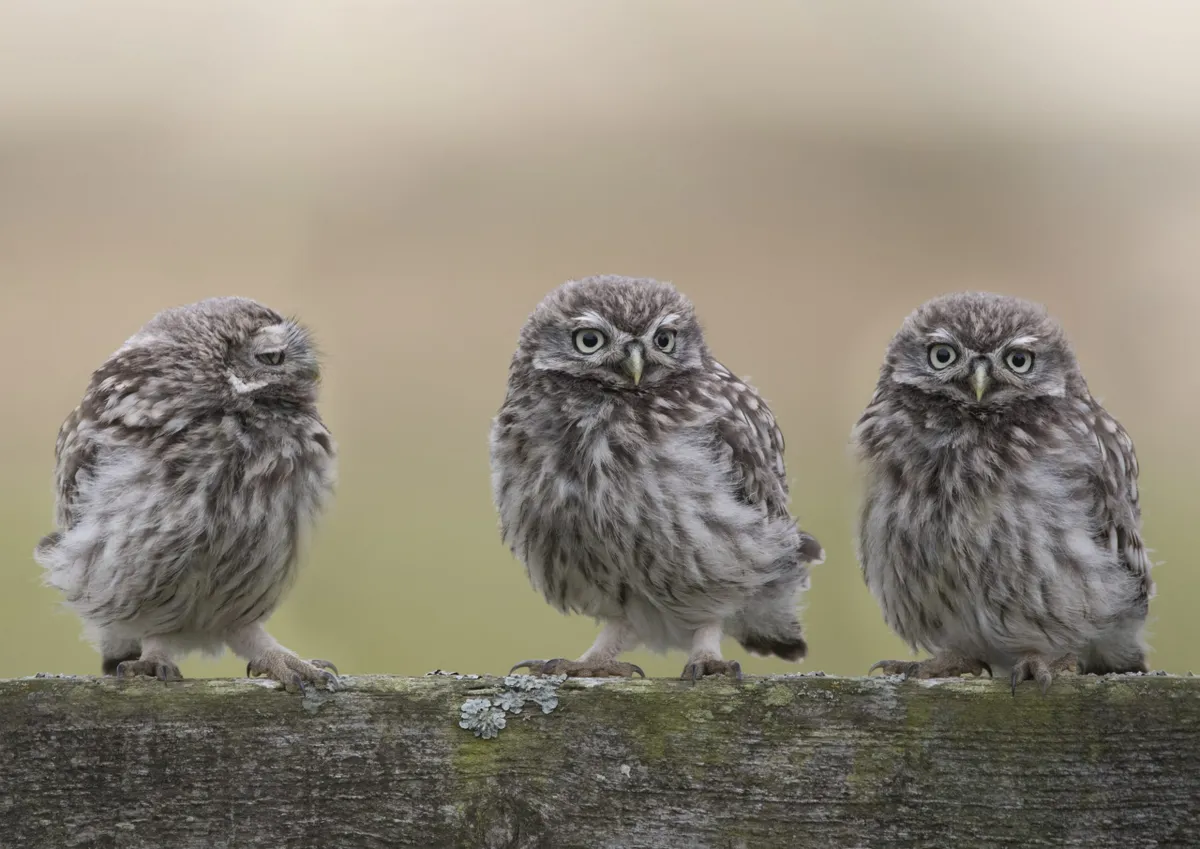
With striking yellow eyes and a mottled cream and brown coat, the little owl is Britains non-native species of owl, which hunts both in the day and at night.
What do little owls eat?
Unlike other owls, the little owl has enough cone and rod cells within its retina to be able to see in colour during the day, as well as at night. Allowing this bird to have a diet of invertebrates, mostly moths, beetles, earwigs and earthworms. This little owl became too obese to fly after finding a particularly good hunting ground.
How do little owls deter predators?
The broad markings on the back of the little owls head acts as armour, deterring predators such as sparrow hawks and even other, larger owls.
Where to see little owls
Mainly inhabiting farmland, rural villages and parkland, little owls are most commonly spotted perched on fence posts, where they wait for their prey. Did you know little owls have over 20 different vocalisations of their unique call?
Owl pellets
This fascinating activity provides valuable information on the diets of our different owl species, helps us to collect records of rarer species, such as harvest mice, and is a valuable means of monitoring changes in numbers of small British mammals.
So, when you have finished analysing your owl pellets, make sure you send your records to The Mammal Society.
Owls swallow their prey whole – pellets are the regurgitated fur and bones. Besides small mammals, which are the most frequent prey, pellets can comprise the remains of birds, amphibians, insects and even the chaetae (small bristles in the skin) of earthworms, though these are only visible under a microscope
How to dissect an owl pellet
This fascinating activity provides valuable information on the diets of our different owl species, helps us to collect records of rarer species, such as harvest mice, and is a valuable means of monitoring changes in numbers of small British mammals.
So, when you have finished analysing your owl pellets, make sure you send your records to The Mammal Society.
Owls swallow their prey whole – pellets are the regurgitated fur and bones. Besides small mammals, which are the most frequent prey, pellets can comprise the remains of birds, amphibians, insects and even the chaetae (small bristles in the skin) of earthworms, though these are only visible under a microscope
- To see what is in an owl pellet, soak it in water. When soft, gently tease it apart with forceps.
- Slowly pick out all of the bones and bits of insect and put to one side for identification.
- Count everything – you may only have one skull but three lower jaws, so check carefully to see how many animals are represented in the pellet.
- Owl pellets can be stored dry. Make sure you include details of the species of owl, collection site and date.
- If the owl has eaten a lot of earthworms (quite common in tawnies), the pellet may consist largely of soil and bits of grass or dead leaves. Most of the remains will be of shrews, voles and mice, which are easy to tell apart.
Animal remains that you might find in an owl pellet
- Shrews have continuous rows of sharp, pointed teeth with red enamel tips that all look much the same.
- Pygmy (smallest), common and water shrews (largest) are easy to tell apart by size – after analysing a few pellets this will be obvious.
- Occasionally you may find a mole, which looks like a very large shrew but without the red tips to the teeth.
- Bats are similar and even rarer; they have shorter jaws, white teeth and prominent canines.
- Rodents have a conspicuous gap between the incisor teeth at the front of their skulls and the flat grinding teeth at the back. The cheek teeth of voles have zig-zag chewing surfaces, whereas rats and mice have three distinct rounded cheek teeth.
- Most voles found in owl pellets (especially barn owl pellets) are field voles. Bank voles are most common in tawny owl pellets; water voles are larger and quite common in wet areas.
- Most of the mice are likely to be wood mice; yellow-necked mice are very hard to tell from wood mice, and house mice are very rare. Harvest mice can be common in areas with rough grass; their skulls are very small and fragile. Young rats are easy to recognise by their large size.
- Bird bones are very fragile, and almost-transparent feathers in the matrix of the pellet are often the first indication that bird remains are present. Identifying species of birds is very difficult, unless some characteristic feathers remain.
- The skull is generally fragmented, but the beak can give an indication of the size and type of bird – seed eaters, such as sparrows, have short, heavy bills, starlings have slender bills with a bent jaw, while blackbirds are more robust and curved.
How to identify animal droppings
History and folklore of owls in the UK
The nocturnal habit shared by most owls is the thing that sets them apart. Active at a time when our sense of sight is restricted, the owls share the night with our fears and it is all too easy to see why they have been associated with witchcraft and evil deeds.
